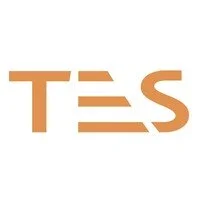Detonators in Possession Management: Safe Use, Storage, and SHEQ Protocols
Detonators are a critical safety device used in railway possession management to provide audible warnings to train drivers approaching engineering works. Their correct handling, storage, and lifecycle management are essential to maintaining operational safety and compliance.
What Are Detonators Used For?
Detonators are placed on the rail to mark the limits of a possession or worksite. When a train passes over them, they emit a loud bang, alerting the driver to stop or proceed with caution. They are used alongside Possession Limit Boards (PLBs) and must be placed only under the instruction of the (S)PICOP or Engineering Supervisor.
Storage Requirements
All detonators must be stored in approved metal containers, commonly referred to as ammo boxes or lockable steel boxes. These containers:
Protect against heat, moisture, and mechanical damage.
Must be kept locked when not in use.
Should be stored in vehicles or designated secure locations.
Important: Detonators must never be stored loosely in vehicle cup wells or other unsecured areas.
If you do not have a container, contact your Delivery Manager or Head of Possession Management to request one.
Detonator Clips
Det clips are essential for securing detonators to the rail and ensuring they remain in place during operations. They:
Prevent movement or dislodging due to vibration.
Must be inspected for damage before use.
Are issued alongside detonators and should be stored in the same container.
If you need additional clips, request them via your Delivery Manager.
Recommended Quantities
Each operative or team should store:
3 detonators per possession limit board.
Matching number of det clips.
1 approved metal container per vehicle or team.
Avoid excess stock. If you have more than necessary, contact your manager to arrange collection and disposal.
Checking Expiry Dates
Detonators have a five-year shelf life from the date of manufacture, which is stamped directly on the device. Before deployment:
Check the date to ensure it is within the valid period.
Do not use any detonator that is expired, rusted, damaged, or illegible.
Record the check in your Safe Work Pack or mentoring documentation.
Disposal of Expired or Damaged Detonators
If a detonator is found to be expired or damaged:
Do not use or discard it independently.
Secure it in its container until disposal.
Return it to your issuing point.
Notify the SHEQ team for tracking and safe disposal.
Responsibility Reminder: It is your responsibility to ensure that time-expired detonators are returned to your issuing manager. It is your manager’s responsibility to ensure that stored quantities do not exceed limits governed by UK legislation. If in doubt, your manager must seek guidance from the TES SHEQ Department.
Safety Alert: Improper disposal—such as placing detonators in general rubbish—poses serious risks.
Storage Limits and Legal Requirements
According to the manufacturer’s safety data sheet:
Up to 5kg net mass (≈600 detonators) may be stored at each place of keeping without licensing.
5kg to 250kg net mass requires registration with the local licensing authority (e.g., council or borough).
Over 250kg net mass requires full licensing of the premises.
MSER (Manufacture and Storage of Explosives Regulations) applies to each place of keeping—not each company. Multiple companies sharing a site must cooperate to ensure the total stored does not exceed 5kg without registration.
